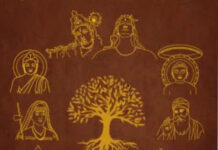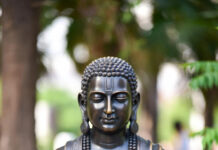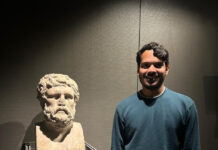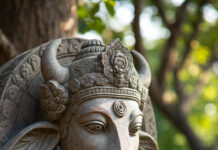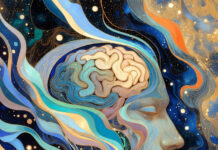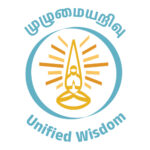
Respected Je,
Please forgive me for bothering you when you are travelling.
If you can provide a simple explanation about the process of meditation it will be very useful for people like me. Why not keep this in mind as something to write about when you find time? If you publish it as a book, it will be extremely useful. If there are some good books already, can you recommend them?
Yours,
Chris
Dear Christopher,
We all meditate every day in, at least, a small measure. It is one of the natural tendencies of our mind. What we refer to as meditation today is only the deepening of this natural tendency through systematic effort and formal training.
Our mind is constantly operating inside of us. If asked to define what the mind is, we may answer that it is the uninterrupted sequence of thoughts running inside us. A neurologist might say that it is a result of the ongoing communication between the neurons in the brain.
If we observe this activity closely, we will notice that just as ink seeps on blotting paper, it too spreads effortlessly further and further away from its margins. It is aimless. Structureless. Centreless. That is to say, it has none of the unifying characteristics that we would ordinarily expect. It is a cascade of free will.
Which is why, in our dhyana traditions, they refer to the mind only as an ‘act of the mind’. It is an activity. It is not an entity or an object. It exists by revealing itself to us in every passing moment. The moment we perceive our mind, it splits into two; one part becomes us, the other, our mind, and we begin to observe our mind. It is a very fascinating act. Because, the moment we recognise that we are observing, we begin to observe our observation.
Equally, we all have moments in which this ‘act of mind’ stops, making it seem as if the mind is in fact non-existent. For instance, when we go through a completely new experience, we become ‘mind’ less for a time. The moment we begin to recognise it, that state of being is disturbed and our mind starts working. It also happens to us momentarily when we gaze at a scenery. Great music suspends us in that state for a longer time.
These are the moments that we describe with the phrase ‘losing oneself’. In Tamil, the term is ‘mei-marathal’. It is a word with deep meaning. All foundational words in Tamil are loaded with philosophy. What our tradition calls ‘mei,’ is both truth and body. ‘Unmai’, the Tamil word for truth was derived from the word ‘undu’. That is, ‘to be’.
That which is, is the truth. That which is, is the body. Seen in this light, the body is the truth. The word ‘ullam’ or mind, emerged from this. ‘Ulle’ is inside; ‘ullam,’ is the mind. That which is inside, is the mind. What goes on there, is ‘ulludhal’ or thinking. Therefore, human existence is a state of union between the mind and the body. And the state in which we completely forget such a state of union is what we call ‘mei-marathal’ or losing oneself. It is a moment in which thinking and truth cease to exist.
Such activity is the most natural kind of meditation. When we go through a profound experience, we are in a state of ‘mei-marathal’. The knowledge we gain in such a state become indelible memories. All the exemplary wisdom we have acquired must have most certainly been attained in such moments. I would go so far as to say that this is indeed the experience that we seek in art, in literature, and in travel.
What is it that happens in that state of losing oneself? The mind that otherwise runs incessantly ceases to exist. It parts like a curtain, and a new depth opens up beyond it. It is that chasm which absorbs the experience of such a moment.
The superficial mind that runs incessantly within us—the mind that we are constantly aware of—our tradition termed jagrat or the awake-mind. The unconscious depth beyond it, it called swapnam or the dream-mind. Swapnam is a tunnel. A medium. Through it, we reach an even deeper, complete mind. A depth at which it operates contentedly, absorbed in itself. Tradition called this sushupti that is the deep-sleep mind or an undifferentiated mass of consciousness.
If we imagine jagrat, swapnam and sushupti as the spray, foam, and wave, then, the sea is what was called turiyam. In other words, there exists only the sea. And it is the sea we behold in various forms. Turiyam is not my mind or yours. It is the whole. The collective mind of humanity. The timeless, everlasting mind. The cosmic mind. The other three are only manifestations of this mind.
Therefore, the experience we attain when we lose ourselves is, in fact, the state of swapnam, a state from which our jagrat has stepped aside. If the experience is even more intense, swapnam too is dislodged, and the state of sushupti is assumed. If the experience is exceptionally profound, it reaches the state of turiyam.
Naryana Guru, in his book Arivu: The Epistemology of Gnosis, describes the state of turiyam as a state in which ‘the knower, known, and consciousness’ become one. This state of union is what advaita calls non-duality. There can be no human being on this earth who hasn’t experienced this state of non-duality in some small measure, if only fleetingly.
The aim of the various traditions of meditation, then, is to find out if such a state can be attained through practice. The Indian jñāna traditions (systems of philosophical-vision) have developed such practices right from prehistory. It came to be called yogam. Yogam means to unite. The state of union of the knower and the known is what was referred to, thus. Meditation is the first step in yogam.
Yogam is common to all schools of jñāna in the Indian tradition. However, it is in the Buddhist tradition that it is accorded paramount importance. And then, in Jainism. Its importance in the Hindu jñāna traditions ranks the last of the three.
In ancient Tamil, meditation was referred to as ‘oozhgam’. The word ‘aazhdhal’ (to be lost) distorts as ‘oozhdhal’. ‘Oozhgam’ is a derivative of this. Those who practiced ‘oozhgam’ came to be known as rishis in Sanskrit and padivars in Tamil.
In the Indian jñāna traditions, Patanjali’s Yoga Sutra is the foremost of all texts on yoga. I started writing a commentary on it, and two chapters were published on this website. I need to complete it.
At present, it is important to clarify what cannot be considered meditation. Firstly, invocation—this is to say, prayer—is not meditation. In recent times, this term is being used in Christian religious events. Prayer is a fervent entreaty to an external force to grant us what we want, whether worldly or otherwise. It is definitely not meditation.
Meditation does not require a god. It does not require any manifest force. In no way is meditation a method to attain worldly gains or to reach heaven. It is an endeavour to reach a state of deep-consciousness, of pure being, nothing more.
Acts of worship, religious service, and joint prayers are totally different from meditation. The domain in which they operate is something else altogether. Meditation is not contingent on god. So far as meditation is concerned, there exists only the one who meditates, and around him, the universe that he seeks to know. It follows from there that meditation is a method that suits both the atheists and the theists.
If one asks whether we must be taught yogam, I’d say that, strictly speaking, the answer is no. We do not require external help for us to observe our own mind, to understand its nature and gradually discipline it. However, in practice, if we don’t have access to expert guidance, we are likely to be misled in various ways and dissipate our energies.
For instance, it is common for a person who meditates to use a sound—that is, a meditation mantra or chant—to centre the mind. If calibrated to the rhythm of one’s breath, that centring happens naturally. It will also seem like one is meditating well. This illusion will continue for many years. It is only later that you will realise that you have not centred the mind, but simply added a sound to your breathing. That you should not combine sound with breath is a lesson learnt through experience.
The one who offers us such lessons learnt from experience is whom we call a guru. I do think that it is impossible to gain complete scholarship in meditation without a guru. For the jñānis, it makes no difference. The guru is one who knows us well, one who has the ability to be accepted effortlessly into our private realm, and also one who has boundless affection for us. It has been my experience that books will not take you as far as their guidance can.
In today’s times, there are a plethora of yoga organisations teaching various systems of yoga. They are useful in the initial stages. The basic principles of yoga and guides capable of imparting these principles are available at these institutions. They may be able to show us the way until a certain point—I don’t have any experience with them. In my view, it is only a personal guru who can take you ro the next stage.
Even at a very basic level, meditation is exceedingly helpful for maintaining peace of mind and equanimity. So, there’s no doubt that it is good to meditate whenever and wherever possible. There is no such thing as ‘proper’ meditation. There is only ‘one who meditates properly’. What is important is to meditate consistently, with commitment and deep observation.
The process of meditation can be broken down, at an elementary level, into three steps—focussing the mind, observing the mind, and effacing the mind.
The first step, is to focus the mind. This is completely contrary to the natural tendency of the mind to branch and spread. In this step, we gradually bring under control, the unbridled functioning of the mind. There are numerous ways to do this. You may focus your mind on a single sound. Mantras, or sounds that have no meaning—such as om, hreem—are of help in this. Alternatively, you may focus your vision on an image. You could do both, too.
Focussing the mind, is a very, very difficult task. That is when we come to understand all the trickery the mind is capable of. When we try focussing the mind, the mind becomes replete with thoughts about the very act of focussing the mind. That which we resolve not to think about will indeed be the thoughts that surface the most. And with them, an identical number of thoughts about suppressing them.
When we attempt to focus our mind thus, we inevitably begin to observe our mind. When we see how our mind functions, we gradually begin to understand it. It is only when you meditate that you will come to realise how self-centred you are. You will understand that you are constantly thinking about yourself. Your petty pretences, your petty desires, your failings, everything will come to light.
If is only when you are able to surmount those thoughts through this process of knowing, then you can claim to be getting the knack of meditation. After a long period of time, if you’ve kept at meditating, there will come a stage when, for a few moments, you will be able to reach a state of ‘no-mind’. In that moment, you’ll see that it is impossible to learn through reading or debate what you have come to know in that state. That is meditation.
Therefore, begin meditating. Finding the right path is solely and wholly in your hands. There are no rituals for this, nor rites. Every tradition has a certain system. All of them are right, if practised correctly.
Meditation is a vast scientific domain in itself. There are a myriad aspects in it that resist easy explanations. At the same time, it is also meaningless to simply read the texts without putting them into practice. Practise first. And when questions arise from your practice, you may seek answers in the texts.
Any book can show you the methods of mediation. If you ask what I am talking about, I will explain some other time.
Je.
First published on Apr 27, 2009
(Translated from the original Tamil essay, Dhyanam, by Jeyamohan https://www.jeyamohan.in/2470/)
Translated by Priyamvada Ramkumar

